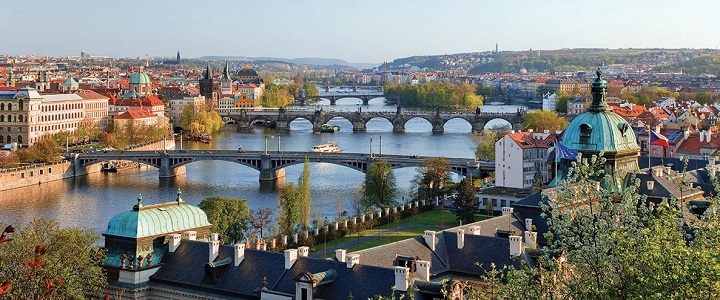| If you cannot ready this newsletter correctly click here |
 |
| |
|
| OFFICES |
| UK portugal spain USA Brazil argentina |
|
 |
TRAVEL TIPS |
|
|
 |
| PRAGUE |
| CZECH REPUBLIC |
| UNESCO World Heritage Site and known as the 'Golden City', Prague survived World War II and was taken by assault by the Soviet communism but with the fall of the Berlin Wall and the end of the Velvet Revolution, it opened itself to tourism, keeping an exciting story and monumentality intact. |
|
|
 |
Places to visit |
|
| At its own pace, unhurried, the Hop On Hop Off in Prague is the perfect choice to get to know the city that is the capital of Bohemia, with about 1.26 million inhabitants. The Old Town Square, dating from the tenth century, is the tourist heart where the famous astrological clock (fifteenth century) lies and where, every hour, the 12 apostles parade. You will also find here the Town Hall, the Church of Our Lady before Týn, St. Nicholas Church, which highlights the Baroque style, and the Kinský Palace in the rococo style. Charles Bridge, on the Vltava River, is one of the main icons. Built in 1356 at the request of the king, it is adorned by 30 statues and promises a pleasant walk. Then comes the Prague Castle that, early on, became the political and cultural centre of the country and today it serves as the presidential seat and it is considered the largest medieval fortress among those that still exist in the world. Visiting Prague Castle is a real journey through the different architectural styles, in which are included the gothic St. Vitus Cathedral, St. George’s Convent and its basilica in Romanesque style; the Lobkowicz Palace and its gallery of Renaissance and Baroque paintings which comprise approximately 1500 paintings. It is also worth getting lost in the castle gardens due to its beauty! However, Prague has more castles. The Karlstejn Castle dates back to the fourteenth century and it is one of the most impressive castles with 129 panels painted by the Master Theodoric in the Chapel of the Holy Cross. Don’t forget the Black Theatre, another icon of the city which is characterized by using a black light, sound effects and a narrator, creating an environment to leave any viewer dazzled. |
|
|
|
|
|
 |
What to eat? |
|
The Czech cuisine has its basis in meat, sausages, the famous goulash soup served in a bread plate and every dish usually comes accompanied by Knedlik, a wheat dough, or potatoes, sometimes mixed with bacon, and always with a sauce.
You will also find the Trdelník, which is a traditional cake topped with sugar and cinnamon; or the famous apple pie, commonly known as 'strudel' or Buchty buns, stuffed with marmalade, chocolate or cheese. |
|
|
|
|
|
 |
Curiosities |
|
Did you know that seven keys are needed to access the Crown Jewels kept in St. Vitus Cathedral? Enjoy a relaxed walk through the streets to the sound of jazz street musicians, visit the local markets or board a cruise on the Vltava River and dine on board. Find out why the Czech beer is so famous on a tour to the Pilsner brewery with over 150 years of history, located a bit out of town.
The Czech Republic is famous for its beer, with 470 different varieties. Here’s a useful tip: put the empty beer mug on the table, in order to inform the waiter to bring you another one full. In each corner of Prague the traces of communism are noticed, as it was here that Kafka was born and where Václav Havel, former president, spoke against communism. Prague has the lowest unemployment rate in Europe. |
|
|
|
|
|
 |
Advices |
|
| One of the city's advantages is to be able to cross it on foot in a couple of days by dividing the following historic districts: Prague Castle, Lesser Town, the Old Town, New Town and Josefov, the old Jewish ghetto - that now is the centre of Prague luxury retail market. The city has a temperate climate, with pleasant temperatures in summer but cold and snow in winter. The only official language in the Czech Republic is Czech, with 96% of the population speaking it. Do not expect that many Czechs speak English, because only the young people know it, while the eldest speak Russian. The musical season in Prague is between April and October, which, in addition to including traditional performances at the Prague State Opera, the National Theatre and the Rudolfinum, also happens daily in churches and synagogues with concerts and recitals. |
|
|
|
|
|
|
|
|
|